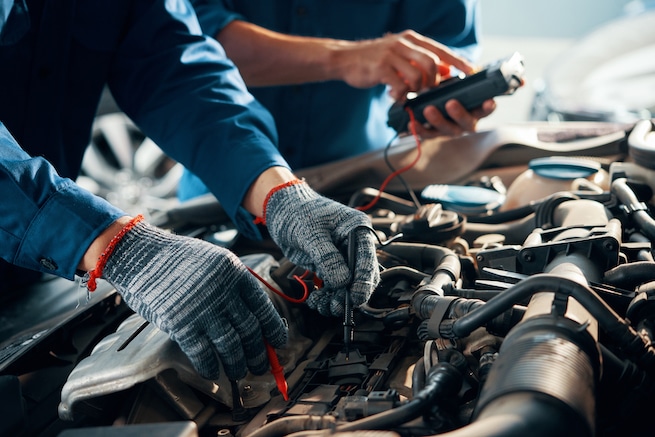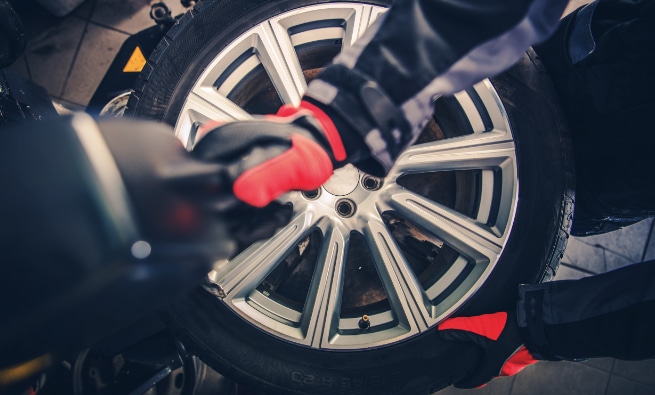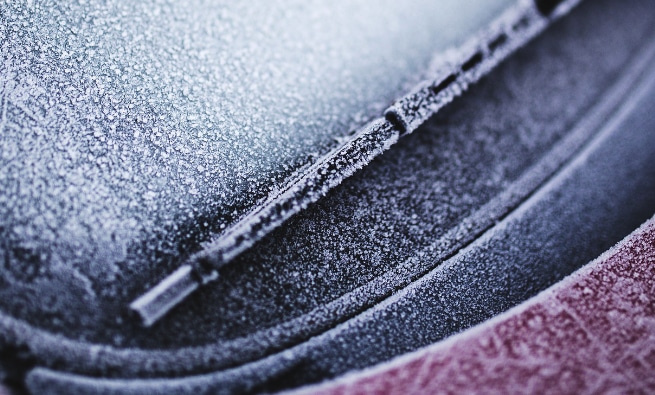10 Ways On How to Winterize Your Car For Cold Temperatures
Winter is a dangerous time to drive. Road conditions can be unpredictable, and the cold weather makes cars more susceptible to breaking down, which puts you and other drivers in danger.
When you reside in a region where the temperatures regularly drop, it’s in your best interest to take care of your car in the wintertime. Keeping your vehicle in good condition during this time will help you avoid breakdowns and prevent serious engine damage.
You may be tempted to wait until spring to get your car serviced, but the danger of winter driving might make you change your mind. Once that temperature drops, you don’t want to be caught unprepared.
Federal data shows that over 156,000 accidents occur on icy roads. Be safer and more efficient by making these changes to winterize your vehicle. If you don’t know how to winterize your car, these are among the most effective steps you can take.
10 Ways To Winterize Your Car For Cold Weather
Your car’s engine gets extremely hot, which means the components require that a cooling system keep them from overheating. When it’s cold out, your car needs an extra bit of protection to prevent the freezing temperatures from doing serious damage.
Using a reliable car cover is just one way to protect your vehicle from the cold air and snow. The best thing is that most auto parts stores will have all the necessary things for winterizing your car.
#1 Refill The Windshield Wiper Fluid
Make sure you are using a freeze-resistant windshield washer fluid. Water can freeze at low temperatures, which makes it impossible for your wipers to remove slush. If you are out driving when this happens, the wipers will randomly clear the windshield without doing anything to remove the liquid.
Using a washer fluid that’s not freeze-resistant means you will have to pull off the road until it thaws. That is why it is super important to keep the fluid-filled before the winter months arrive. This step will help you maintain a clear vision on the road during the colder months.
#2 Check Your Battery and Battery Terminals

Battery capacity is reduced in cold weather! Auto specialists report that at 32 degrees Fahrenheit a battery loses 20% efficiency, and it takes longer for the battery to reach a full charge. The colder it gets, the less efficient the battery is.
It also has to work harder to maintain the heaters, defrosters, and other winter functions. In particularly chilly weather, chemical reactions required to create power in a car battery slow down. And as the cold weather approaches, the freezing temperatures will take a toll on your car’s electrical components.
The extreme cold can cause corrosive buildups in your battery terminals and other parts surrounding the battery. That is why it is crucial to check your car’s battery to make sure it is working properly before the cold weather arrives.
#3 Get Yourself Some Dedicated Winter Tires
Make sure the tires are season-appropriate, all-season tires are passable in most climates, but you will not receive any of the benefits of all-season or winter tires. They allow better traction thanks to the rubber compounds and aggressive tread pattern.
If you live in an area with a lot of snowfall, consider changing to snow tires for extra traction. While they are lower on gas efficiency, they provide more control and security than summer or all-season tires. You should also consider buying tire chains if you don’t want to switch during winter driving.
#5 Check The Tire Pressure and Tread Depth

When pressure is low, tires wear faster and reduce the amount of grip provided. This makes them more likely to slip on wet roads or ice patches, making for an accident situation in general because there’s not enough traction.
Check your tires often; the air pressure of your tires in harsh winter conditions is lower than in summer in most cases and can be reduced even by 10 percent or more when the temperatures drop below freezing. Make sure your tires have no bald spots and that they have good tread.
To ensure that your tires have enough tread, grab a penny and insert it into one of the grooves between each layer. With Lincoln’s head facing upside towards you, pay attention to how much of his face is actually visible. If you can see a lot of Lincoln’s head, then your tire is worn out and needs to be replaced.
#6 Purchase a Winter Emergency Kit
While you are winterizing your vehicle, make sure to adjust your emergency kit to fit the challenges of being stuck on the road in wintertime. Make sure to keep it in your trunk and check on it every month or so.
- Flashlight and batteries.
- Blanket, thick gloves, hat, socks, and hand/foot warmers. Also, consider a solar blanket to help trap heat if you are in severely low-temperature areas.
- A small snow blower and a means to keep clear of snow and ice.
- Ice scraper and brush. An ice scraper is one of the most important tools you can have on hand in the winter.
- Bag of road salt, sand, or kitty litter to help give tires traction if tires get stuck in slush or snow.
- Flares and bright orange emergency road signs.
- First Aid Kit with air or squeeze activated heat packs.
- Jumper cables or a portable car jump starter.
- Matches and candles for supplementary heat (be extra careful in using them!).
- Three days in non-perishable snacks and drinks (carbs for fast energy, protein for endurance, high calories to sustain body heat).
#7 Keep The Fuel Tank Full
Keep gas tank full. Not only will it reduce condensation that can freeze up gas lines, but a full tank may also save you if you get stranded and need the engine to keep warm during the colder weather.
Modern cars are so good they can sometimes shut down the engine in an unsafe situation. Place a space heater under your hood to keep it warm and running if your battery dies. You might even consider adding some thick insulation around the fuel tank to keep it warm during the coldest periods of winter.
#8 Get Some Winter Wiper Blades

Your windshield wipers need to be in good shape for slippery winter weather. If you buy new blades, make sure they are designed for winter conditions. Winter wiper blades do not become stiff and brittle like conventional wiper blades.
They use rubber that has proven itself capable of withstanding sub-zero temperatures for hours at a time without any problems. They are designed to keep the windshield clean and clear of snow, ice, and frost, even in the heaviest cold temperatures.
#9 Change Your Engine Oil
Modern vehicles are built to last at least ten years or 100,000 miles without needing an overhaul. And it’s the oil that helps the engine parts smoothly interact with one another, ensuring the long life of your engine.
However, you should change the motor oil just before winter since cold weather makes oil thick and gloopy. Switching to a thinner oil before winter will make your engine more efficient and reduce the risk of engine failure during the winter season.
Before doing so, check the owner’s manual or visit a local auto parts store to make sure you get an oil that gives your car maximum protection and can help the engine run smoother during the winter. That way, you can have your four-wheel drive car ready for the road when your driveway and neighborhood become a sheet of ice.
#10 Service Your Car For Winter Season
Have a mechanic check your brake, transmission, and other fluids to prevent issues while driving. Neglected maintenance can cause major problems heater core or water pump.
That is why it is important that you use the proper coolant bottle and not the conventional green antifreeze or just water. Once the cooling system is compromised, your vehicle reduces the airflow going to your car’s heater, which can cause overheating of the blower motor resistor.
Remember not to open the radiator cap if it is hot. Instead, let the engine cool first. Instead, you should try to find a close-by repair shop that can help you fix any issues and keep them properly maintained.
F.A.Q.
What does winterizing your car consist of?
Winterizing your car consists of draining all the fluids, filling it with winter-formula gas, adding a small amount of screenwash antifreeze to your windshield washer reservoir, and topping up your battery with distilled water.
It also means to purchase winter tires or to make sure that your tires have the right amount of air pressure. You also need to clean your lights and wiper blades. Your owner’s manual will give you all of the information you need on what, when, and how.
Is winterizing a car necessary?
Warning owners about the dangers of harsh winter conditions is not necessary. You can decide for yourself whether or not to winterize your car. However, it is advisable that you do so.
We just suggest and advise, and we don’t recommend because we know the consequences and risks associated with neglecting this process, and we want you to make an informed decision. Your owner’s manual is always the best place to start.
Last Tips to Prepare For Winter Weather
If you have the time, you should consider updating your driving knowledge as well. Don’t underestimate how much this can help you during winter. For example, it’s very important that you remember what kind of stopping distance you should keep in different winter conditions to stay safe.
Have a mechanic check to make sure your defrosters, heater coils, and radiator are all in top working order. Also, rubber and plastic parts can get brittle and frail.
Have your mechanic check belts, hoses, spark plugs, and brakes are all in working order to prevent dangerous breakdowns. Just remember, winterizing a car is about being safe, being prepared.
You can try using road salt on your driveway, getting a car cover, and even storing your vehicle in a heated garage. This prevents your door locks from freezing and your battery from running out of charge.
And finally, make sure to always keep the gas tank full. This reduces condensation that can freeze up gas lines, and it gives your engine a full supply to work with if you are stuck in traffic or stranded on the side of the road.
Last Updated on: March 16, 2025

